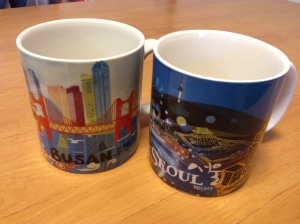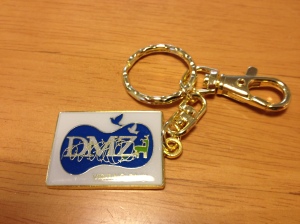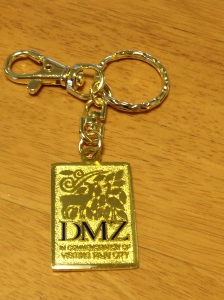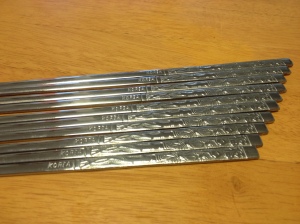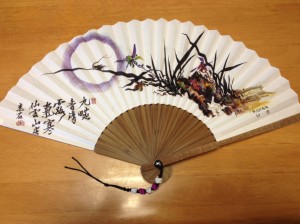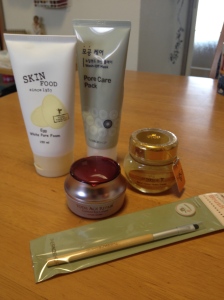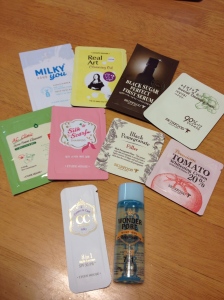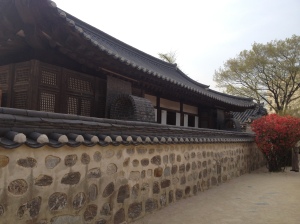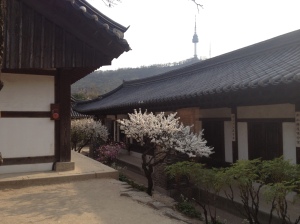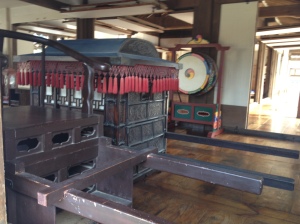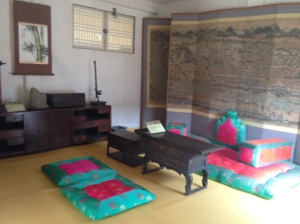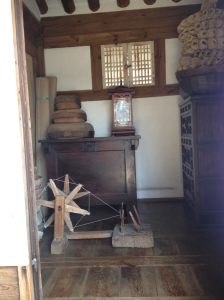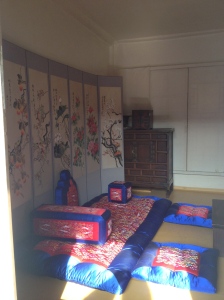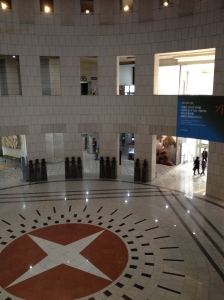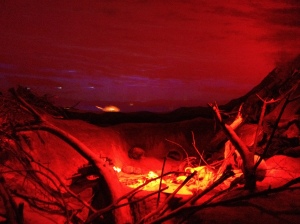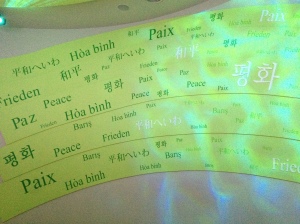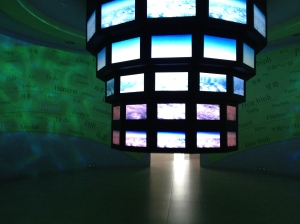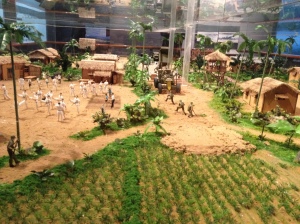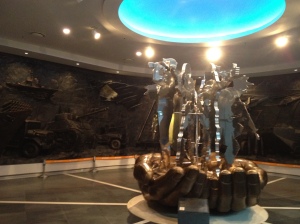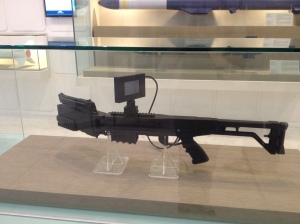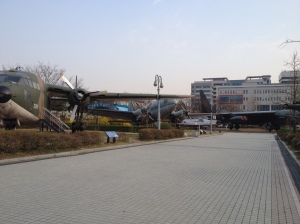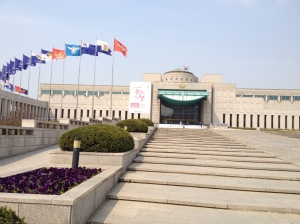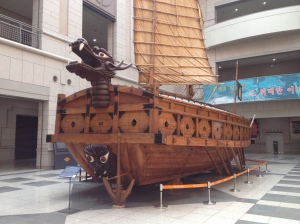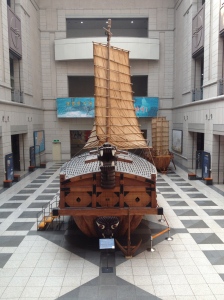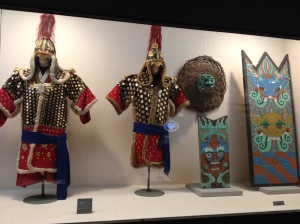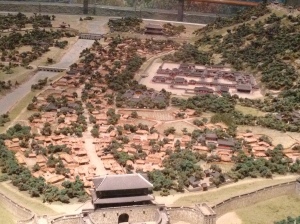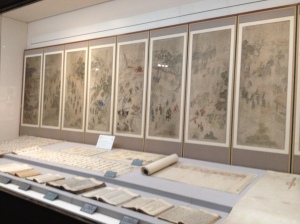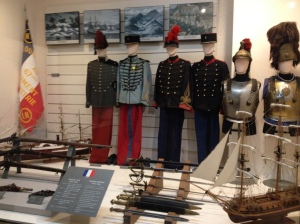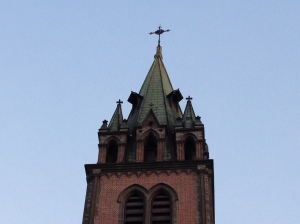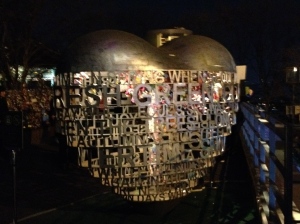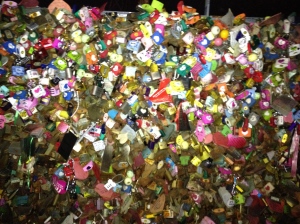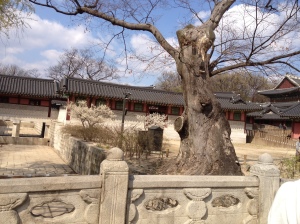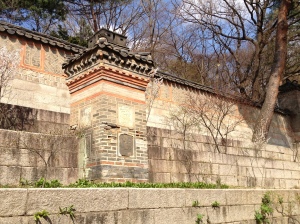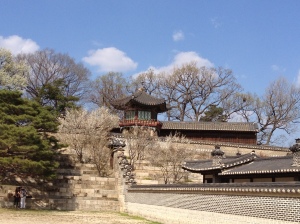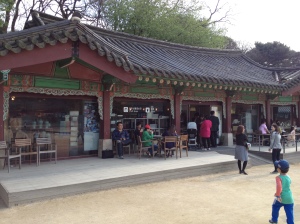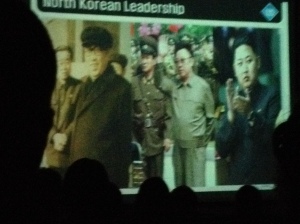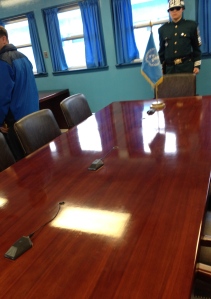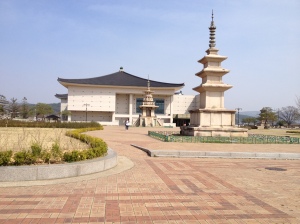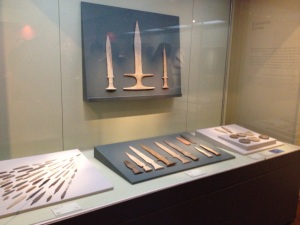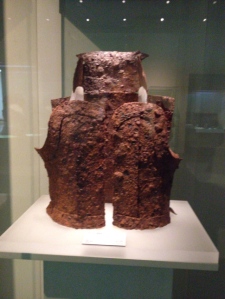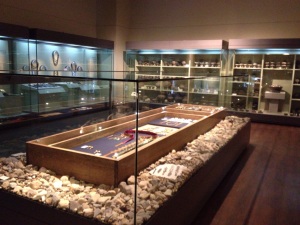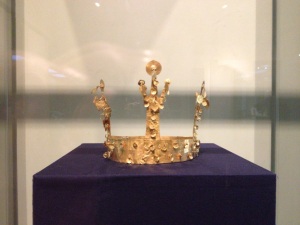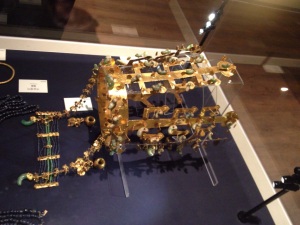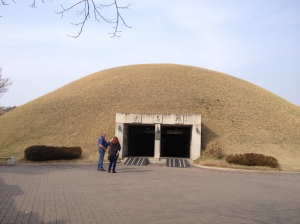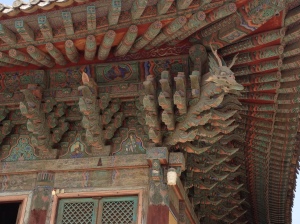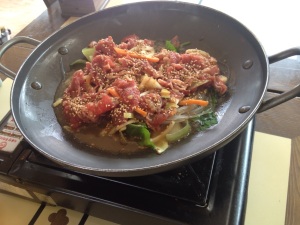Today I’d like to talk about some cool stuff I got in Korea. Then I’ll get back to talking about Japan, I swear!
The first couple of things I got might not really be that Korean, since I got them from Starbucks, but I still think they’re pretty cool. I’ve never been much of a coffee person, and Starbucks seems to be pretty evil all things considered, so I might go there once or twice a year if I’m with a friend. I’ve actually been going more than usual since I’ve been in Asia, though, because my prefecture only has three Starbucks locations in total, and apparently everyone I know in Japan is crazy about it.
I’ll cut to the chase: unbeknownst to me, Starbucks locations all over the world apparently have theme mugs representing different popular cities. I did not know this until I got to Korea and saw the awesome Busan mug. And now I own a mug from Busan and a mug from Seoul.
What can I say? The designs are really cool and they feature popular city sites, so they’re great as far as memorabilia. I’m also a little worried that when I return to Canada everything I bring back with me will be obscure and require long, boring explanations on my part if anyone asks about them, so these seem like simple discussion pieces. I imagine I’ll have conversations with friends that go something like this:
Me: “Want some coffee?”
Friend: “Sure. Oh, you went to Seoul, eh?”
Me: “Yes, I did. And I bought a mug. The mug you are now holding.”
Friend: “I easily understand.”
See? Nothing to it!
Okay, moving on. Everywhere you go in Korea, if you hit a lot of tourist-y locations, you’ll see vendors selling mother-of-pearl merchandise. As a girl with some girly tendencies, my eyes were often drawn to the sparkling, glimmering designs and deep, pearly coloring. As an adult with student loans, however, I resisted the attractions, knowing that I would never actually have a use for a little hand mirror or a jewelry box that I’d have to ship home.
So here’s a picture of the jewelry box I bought and will now have to ship home:
Thankfully it’s a small one! Okay, here’s the story: about halfway into my trip in Seoul my friend and I were in Insadong when we came upon this huge souvenir place. There was an enormous display of mother-of-pearl goods, and like a moth to a flame I couldn’t avert my eyes. The saleslady working there saw me and pounced.
“It’s beautiful, isn’t it?” She asked.
“Yeah, it’s beautiful,” I agreed.
I guess a stronger woman would have simply walked away, but what can I say? I am too Canadian to walk away when someone is talking to me. I deliberately did not ask about prices, because I knew that would send the wrong signal, namely that I was looking to buy, but it turns out I didn’t need to ask. She immediately said, “Twenty-five dollars. But for you…”
At this point she smiled secretively, glanced around, leaned close, and whispered, “Twenty-three!”
‘Just for me’. Yeah, I bet. I might be a Canadian, lady, but polite doesn’t mean stupid. I’m guessing she says that to all the suckers.
I put on my best skeptical face and responded, “Twenty.” I was trying to lowball her, figuring she might give up on the sale.
I’m proud to say she looked genuinely surprised, but my plan failed. Instead, she countered, “Twenty-two.”
And I bought it. What was that I was just saying about not being stupid? Well, what can I say? I knew I couldn’t walk away after having made a counter-offer. That would just be too rude. Curse my Canadian bones!
Anyway, as it turns out I actually have a use for it seeing as I bought some jewelry in Korea as well. I mean, I owned jewelry before that, but I needed a good segue way into this paragraph. Again, while in Insadong, I came upon a little jewelry shop that sells handmade goods.
This was kind of the opposite of the jewelry box story: as soon as I caught sight of one of the necklaces inside I knew I wanted to buy it. I asked the man who owned the place how much it was, and he told me everything was ten dollars and that it was all handmade by his sister (the woman working with him in the shop). The one that caught my eye was the pink one in the above picture, and I also bought the green cross, which is apparently made of traditional Korean ceramic.
I got the smaller necklace that looks like a cluster of grapes at one of the DMZ gift shops. Before going to Korea I had heard that Amethyst is a popular Korean export, so I had planned to get something made of amethyst before I left. Mission accomplished, I guess!
Part of the reason we were shopping in Insadong in the first place is that my friend actually knows quite a bit about traditional Korean art and even has a collection going. He collects hand-carved theatrical masks and traditional woodblock paintings.
The woodblock paintings he collects are in a series of four celestial animals, which includes a dragon, a phoenix, a tiger, and a turtle. He got one of the larger prints as well as a frame for it, and while I don’t want to say how much he spent, let’s just say it was a lot. While he was talking with the shop’s owner I looked around a bit and the following painting caught my eye:
It’s one of the prints in the celestial animal series, but it’s much smaller and much cheaper than the one my friend got. The animal featured is a turtle, if you can believe it! I kind of fell in love and had to get it.
My friend also purchased one of the aforementioned masks at a different place, which were just as expensive as his print. I have to say, the masks are pretty cool. They’re from a theatrical style that’s similar to the caricatures used in the Canterbury Tales. Each mask represents a social position, like “the monk”, “the scholar”, etc., and they were used to perform social satires.
I bring up the masks because my friend apparently really charmed the lady working at the shop, so she gave both of us little souvenirs for free. I think they might actually be bolo ties, but maybe I’m wrong. Anyway, here’s a picture of mine:
I don’t know what the character is supposed to be, but I think it’s a woman, which is why the lady gave it to me. It was pretty sweet of her.
One thing I have to say about Korea is that it has an enormous and well-developed souvenir industry, one that exists in places I didn’t expect it to exist. And it’s also very internationally-oriented, especially compared to some places I’ve been to in Japan (but then again, I’ve gone to some more obscure places in Japan, so I’m guessing the places in Tokyo and Kyoto are a little more international). For example, while I’ve rarely been able to find English books in Japan, especially not at souvenir places, there were loads of English books at many of the sites I visited in Busan and Seoul. Seeing them awakened a sort of primal instinct in me, one from a time when I used to gravitate happily to bookshelves, unencumbered with the knowledge that I would be completely unable to read them. So, while I was at the Imperial Palace I got a book of Korean folk tales and one about the DMZ. They’re both now standing among the books on my desk at work, ready to be read when the days get slow.
Now, speaking of souvenir shops in places you wouldn’t expect them to be, there are four or five of them in various places on the DMZ tour. There’s one neat the Joint Security Area where you actually take the DMZ tour, there’s one at Dorasan Station, there’s one at the Third Infiltration Tunnel, and I know I’m missing one or two. They sell some strange things there. At the shop near the Third Infiltration Tunnel you can buy enormous bags of rice. I think they’re rice harvested from Daeseongdong, the freedom village inside the DMZ. You can also buy barbed wire. Like, official DMZ barbed wire, I guess.
I felt weird buying anything at all, but I wanted to get a couple of things to remember my trip, knowing I might never be back there. Hopefully there will soon be a time when the DMZ doesn’t even exist. So I got a little keychain and coffee mug, thinking I might start a collection of coffee mugs from various places I’ve been.
My prized possession from Korea, though, hands down, is the North Korean currency I got. It never even occurred to me that such a thing was available, but some of the other DMZ visitors asked about it at the souvenir shop. I got a 100-won bill, which I think comes out to about one Canadian dollar. And I think it cost about thirty dollars, so again, I might not be the brightest tool in the box. But I can pretty much guarantee I will never get another opportunity to touch North Korean currency.
Pictured on the bill, by the way, is Kim Jong-il, if I’m not mistaken. I’m pretty sure he’s on all the currency in the North. I could be wrong about that, though.
Anyway, on a brighter note, I also picked up some Korean chopsticks. If I was living in Canada I definitely would not have done this, but that’s because in Canada I didn’t use chopsticks that often. Now that I use them every day, I was interested to see that Korean chopsticks and Japanese chopsticks are different. The ones in Japan are sort of like elongated cones, circular at the thin tip and either circular or just slightly square-shaped at the thicker end. Korean chopsticks are long and flat, and are typically stainless steel like Western cutlery, while Japanese chopsticks are usually made of wood or plastic.
It’s actually kind of uncomfortable for me to use the Korean ones compared to the Japanese ones. Wonder why!
While I was at the Bulguk-sa I managed to round out my fan collection by getting a beautiful folding fan. I’ve been collecting fans ever since I came to Japan, kind of as memorabilia for every place I’ve been.
The one I got in Korea is definitely more of a display piece than a fan for practical use. For one thing is pretty big, which makes it kind of heavy, and the tassel tied to the handle would be really annoying if you’re using it on a hot summer day. And, you know, it’s made of paper. It really is beautiful, though.
And, finally, the cosmetics! Ever since I came to Japan I’ve been hearing about how cheap and wonderful the Korean cosmetics are. So, I’ve been pretty eager to do some shopping there and give them a try. I might do some reviews down the road, but for now I’ll just talk about which ones I got.
First I stopped at the Face Shop at Busan station and picked up a clay pore-care pack, which is a mask you’re supposed to use twice a week. I also grabbed an eyeliner brush there. Then when I was in Seoul I stopped by Skin Food for some “Egg White Pore Foam”, which I think is something similar (it was recommended by a friend). I also got some “Royal Honey Hydro Cream”, a moisturizer that purports to fight wrinkles. Finally, I swung by Etude House and got some firming cream for my eyes (hey, it was cheap, and apparently you’re supposed to start young with this kind of stuff).
What really got me excited about all this stuff was the free swag they give you when you shop at these places. I got loads of little sample packs of moisturizer, filler (whatever that is!), cleanser, whitener (not that I wanted whitener, but hey), and even a little bottle of toner. I can’t remember the last time I got anything resembling free samples at a cosmetics place in Canada.
And that’s about it for my swag! I feel like I probably bought too much stuff, but that always seems to be the way it is for me after I travel somewhere. And generally I’m happy with my purchases.
Well, you know. Besides that damn jewelry box.
